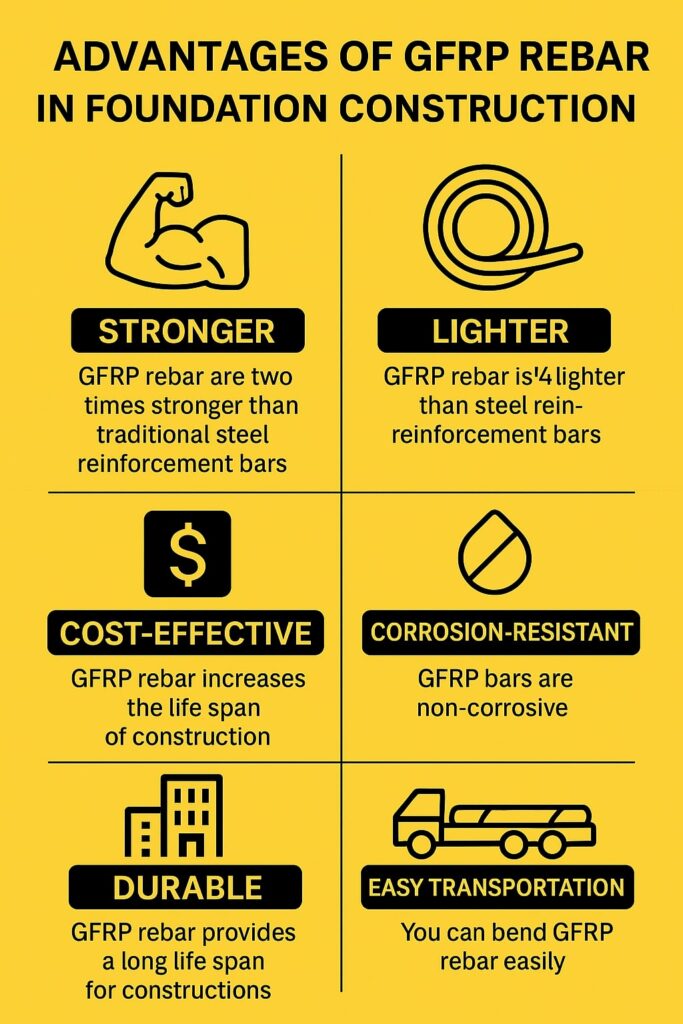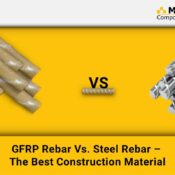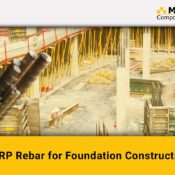GFRP Rebar for Foundation Construction
GFRP Rebar for Foundation
The foundation is the primary support of a building and is an essential part of the Construction. The part of the building bears all the loads from above and transfers them to the ground. The loads on foundations are caused by the structure’s weight, the live loads due to wind and rain, and the seismic loads due to earthquakes. The foundation’s soil has to be strong enough to bear the loads.
Foundations are generally considered either shallow or deep. Shallow foundations for small structures, simple geometries, and low loads are typically individual spread footings. Deep foundations for large structures and sites with complex geometries are typically driven piles, drilled shafts, auger cast piles, or helical piles.
Foundation engineering is the application of soil mechanics, rock mechanics, and engineering geology principles to the design of foundation. This discipline is vital to the safe design of above-ground structures, where interaction with the ground is a primary design consideration. The recognition of the importance of foundation engineering to the design, Construction, and long-term performance of structures has dramatically increased over the past few decades. As a result, a significant volume of research is available to guide professionals in the practical design of foundation systems.
Types Of Foundation
- Shallow Foundations: The most common type of foundation is the shallow foundation. A shallow foundation is a type of foundation that transfers loads to the underlying soil. The loads on shallow foundations are caused by the structure’s weight, the live loads due to wind and rain, and the seismic loads due to earthquakes. The foundation’s soil has to be strong enough to bear the loads.
- Deep Foundations:- The deep foundations transfers building loads to the earth further down from the surface, than a shallow foundation does to a subsurface layer.
Purpose Of Foundation
Foundation engineering aims to ensure that buildings and other structures can withstand the forces of nature and human activity. Foundation engineering is a critical component of any construction project, as it helps to ensure that the building can stand up to the test of time.
Foundation engineering is the process of designing, building, and maintaining a foundation, typically a structure on which other structures are erected. The purpose of foundation engineering is to ensure the stability of a building and to minimize the chance of its collapse.
- The stronger the foundation, the more stable the Construction.
- The proper Construction and design provide a proper surface for developing the substructure at an adequate level.
- Foundation is the main reason behind the stability of all the Construction.
Requirements of Foundation
- The foundation’s design and Construction must be done, so that the foundation can sustain and transmit the dead and the imposed loads to the soil.
- A strong foundation can avoid the different settlements.
- Based on the area and soil, it is recommended to have a deeper and solid foundation so that it can protect the Construction from the damage of stress.
Glass Fiber Reinforced Polymer Rebar
GFRP Rebars are an essential part of any foundation construction project. They offer stiffness and support while keeping the building in place.
Foundation construction using rebar is an often-used but often undervalued building technique. Rebars are virtually indestructible and can be used in various ways to support a foundation, such as horizontal and vertical rebars, tiebacks, and moment connections. In this paper, we will discuss the benefits of using rebar in foundation construction and provide a step-by-step guide on creating a foundation using rebar.
GFRP bars compare favorably with steel bars in several durability aspects and are used more often in Construction, especially in corrosive environments.
Advantages of GFRP Rebar

- Stronger:- GFRP bars are two times stronger than traditional steel reinforcement bars. It makes an ideal choice for high-load-bearing foundations. Higher strength ensures the foundation stands strong in extreme conditions.
- Lighter:- GFRP Rebar is ¼ lighter than the steel reinforcement bars. It provides more strength at lower weight. The transporation of GFRP bars are very easy, It saves the costs and time.
- Cost-effective:- GFRP Rebar is a durable construction material. GFRP bars increase the life span of construction. By using GFRP Rebar Foundation does not require regular maintenace and replacement.
- corrosion resistant:- GFRP bars are water compatible. GFRP bars corrossion-ressistant. Its non-corrosive nature extends the lifespan of the foundation and reduces maintenance costs.
- Durability:- GFRP bars are durable construction materials. GFRP Rebar provides the long life span of the Construction, building, and bridge Construction.
- Easy transportation:- The ride of GFRP Rebar is effortless. You can bend this rebar easily. So it makes it quick to load rebars on the vehicle.
- High temperature:- GFRP bars can handle the high-temperature stress. You can use this material in bridges, tunnels, highways, nuclear stations, and power stations.
MRG Composite Rebar
MRG Composites Rebar is the leading GFRP rebar manufacturer in India, offering high-quality and durable solutions for construction projects. As The Pioneers of GFRP rebars in India, MRG Composites sets the benchmark for innovation and reliability. With the best GFRP rebar prices in India, we ensure quality and reliability. Contact us for expert consultation and superior reinforcement solutions. GFRP Rebar is an ideal choice for all construction.
Conclusion
The foundations are the part of a structure that transfers loads to the underlying soil. The foundation must be stronger to move the load without disturbing the Construction. Many materials are available in the market, like CFRP, FRP, steel reinforcement bars, TMT, and GFRP Rebar. GFRP bars are the best material for the construction project.
GFRP Rebar For Foundation FAQs
- Why is GFRP rebar preferred over traditional steel rebar in foundation construction?
GFRP rebar is preferred because it is twice as strong as steel, ¼ the weight, and corrosion-resistant, making it ideal for foundations in moisture-prone or aggressive environments. It ensures long-term durability and reduced maintenance.
- Can GFRP rebar withstand extreme conditions like high temperatures or seismic activity?
Absolutely. GFRP rebar is designed to withstand high temperatures, chemical exposure, and seismic stress, making it suitable for use in bridges, tunnels, power plants, and other demanding applications.
All Categories
Recent Posts
GFRP Rebar vs. Steel Rebar: Strength, Durability & Benefits
GFRP Rebar for Foundation Construction
MON-SAT 8:00-9:00
+91 69 863 6420




